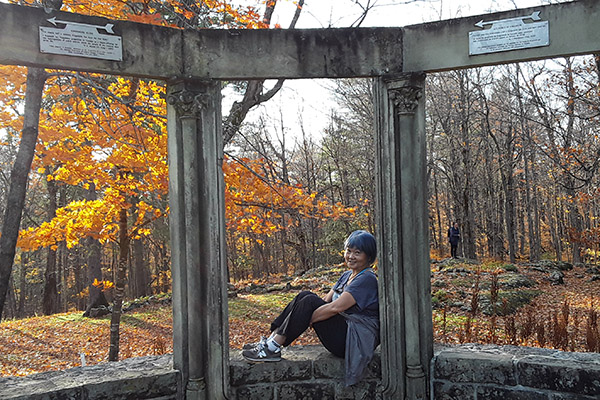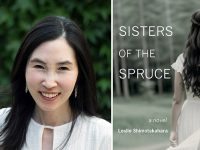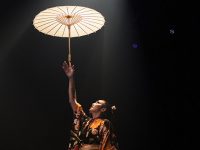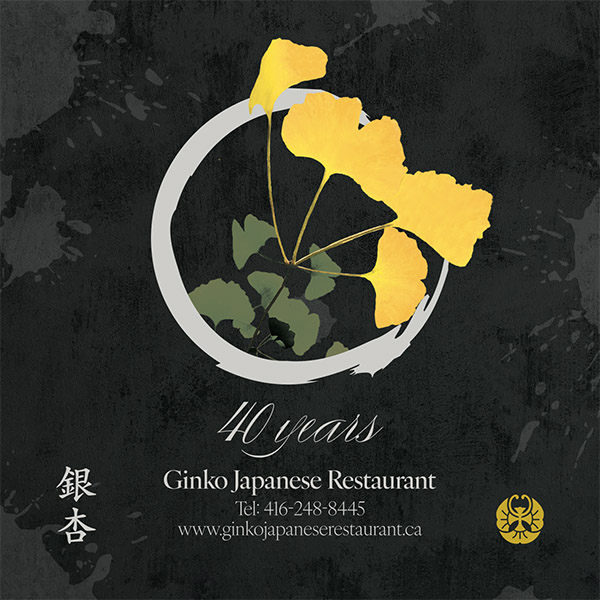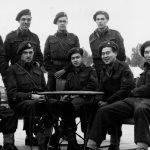Caroline Ishii embraces the Danish spirit of hygge, or coziness, through walks in nature with friends and her new puppy. Photos courtesy: Caroline Ishii.
OTTAWA — With the colder weather and shorter daylight hours, I struggle to stay uplifted and positive.
In my frequent walks in nature, there are changes. Trees are losing their leaves, and the grounds are covered with leaves, pine needles, and frost on colder mornings. Birds are flying south. Nature changes organically with the seasons. Can we change too?
I’ve been fascinated by the Danish concept of hygge, pronounced “hoo-gah”. It is a quality of coziness and comfortable conviviality that evokes a feeling of contentment or well-being.
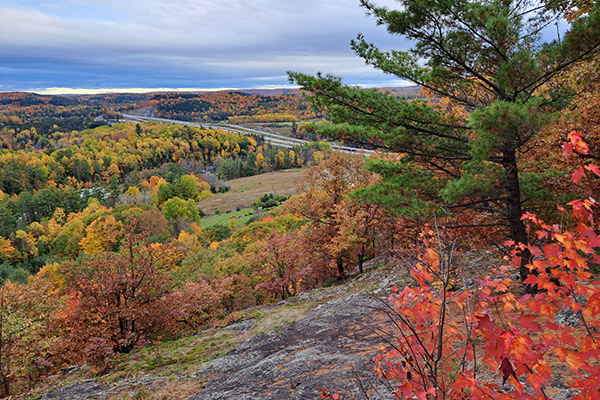
As the leaves change in fall, can we change too?
Hygge is derived from a sixteenth-century Norwegian term, hugga, meaning comfort, related to the English word hug. Denmark is known for having intense winters, but an integral part of hygge encompasses coziness, warmth, and well-being while enjoying the simple pleasures in everyday life.
According to the official Danish travel website, “Hygge means creating a warm atmosphere and enjoying the good things in life with good people. The warm glow of candlelight is hygge. Cozying up with a loved one for a movie—that’s hygge, too. And there’s nothing more hygge than sitting around with friends and family, discussing the big and small things in life. Perhaps hygge explains why the Danes are some of the happiest people in the world.”
Can we learn from the Danish spirit of hygge? In most countries with winters, certain traditions and comfort foods keep people warm and cozy during the colder months.
Winter in Japan
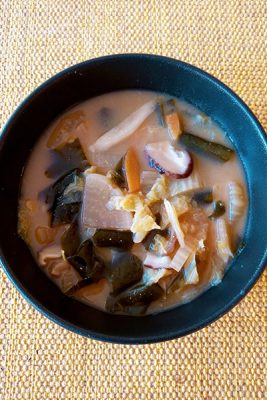
As the weather changes in Japan, people embrace the winter with warm foods, like nabe, oden, and yaki imo. Photo courtesy: Caroline Ishii.
In Japan, the seasons and food go hand-in-hand. With colder weather, people enjoy steaming nabe (hot pot dishes) with family and friends. Street vendors sell piping hot roasted yaki imo (sweet potatoes). Simmering pots of oden appear at convenience stores, with ingredients like fish cake, daikon radish, konnyaku (yam cake), and my favourite, tofu pockets with mochi in a soy sauce kelp broth.
Also, hot packs of different sizes appear in stores. In Canada, pocket warmers are usually used when you are enjoying winter activities. In Japan, they come in various sizes for different body parts, with adhesive backings, and last 24 hours. On a cold day, a friend gave me a hot pack to try on my lower back, and I was in heaven.
Without central heating and little insulation, most Japanese homes are cold and damp in the winter. To save on electricity, only certain rooms in a home are heated as needed with spot heaters and the kotatsu, a low table with a small heater built underneath and a heavy blanket that covers the table to the ground to keep your lower body and feet warm as you sit at the table. I loved the kotatsu. However, it can be dangerous. Not only because you are advised not to fall asleep under the cover, because it can become too hot, but also because you can become addicted to it.
In some places where I lived in Japan, I would come in from the cold outside to the chill inside and immediately rush to turn on the kotatsu. I spent a lot of time under the warmth of the cover that engulfed more and more of my body each time, making it hard to leave my warm den.
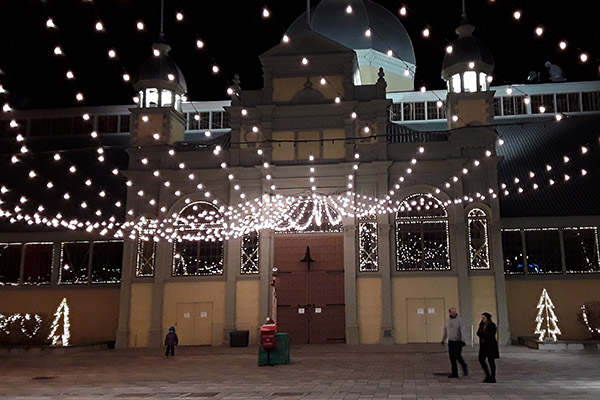
Enjoying winter activities in Ottawa-Gatineau is a way to stay present and positive in the cold winter months.
Ottawa-Gatineau winter
Now that I’m living in Ottawa-Gatineau, one of the best remedies for winter is to be prepared for it and enjoy the outdoors, whether walking, skating, snowshoeing, or cross-country skiing. This year, I’m prepared with comfortable waterproof boots and the warmest long coat I could find. These will keep me warm during the city and forest walks.
I’m also finding ways to brighten up my living environment and make it more hygge this winter. It’s part of my winter manifesto.
I’ll use white fairy lights to decorate and make spaces more magical. I’ll light candles. My latest love is candles with rechargeable batteries. I don’t have to worry about putting out the candles should I fall asleep under warm blankets while reading or watching a good movie. I’ll make more time for hot baths with healing bath salts and a good book. After being outdoors, I’ll savour nourishing soups and sip hot cocoa with marshmallows or a warming chai tea.
And I’m scheduling some quality time to connect with friends, either attending a theatre show, or music concert, going to a new restaurant, or just walking in the snow.
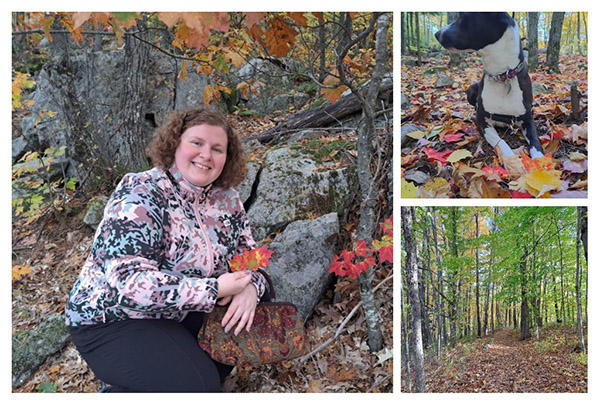
Winter walks with Caroline’s friend, Katia.
One of my favourite adventures is going to the Gatineau Park forests on the weekend with my friend Katia. For our walks, she brings cake and a thermos of hot cocoa with pottery mugs. I was skeptical at first about carrying something breakable. But I have been converted. I love how it keeps the cocoa and my hands warm as I sip and enjoy my surroundings.
We find a bench or spot in the forest and quietly sit as we eat, drink, and watch the scenery unfold around us, like the start of a show. The grounds with patterns from the leaves and twigs, the trees of various shapes, birds flying from branch to branch, and chipmunks scampering among the leaves. The more I relax, the more I see. I can hear myself say, “thank you for bringing me here.”
On my walks, I hug a tree, but always when no one is looking, so I don’t look like the crazy lady who hugs trees. By connecting with a tree that is deeply rooted and has probably been around for longer than I have, I ground myself. I ask the tree to nourish, inspire, and help me be more present. We rely on devices to support us in our communications and connections, so why not nature too? Nature has been here since before we were born and will hopefully be here after we die—if we take care of it.
One of the fundamental parts of Danish hygge culture is deliberately taking time away from the daily grind to be fully present. When I find myself stressed, running from thing to thing, and rushing to meet deadlines, I am grateful when I remember to pause more. If I can’t get out for a forest walk, I pause where I can find some quiet and do a breathing exercise to ground myself.
Ground control breathing exercise
Standing with my eyes closed, I feel the earth beneath my feet and the skies above. I breathe deeply, drawing energy from above my head, down my back, and into my feet to the ground below. From the ground, I bring my energy back inside my body, toward the top of my head and the skies above. I keep on doing this for 30 seconds while I breathe deeply. I am a tree with my roots firmly planted in the ground. And when I open my eyes, I am in a new place, back to the present.
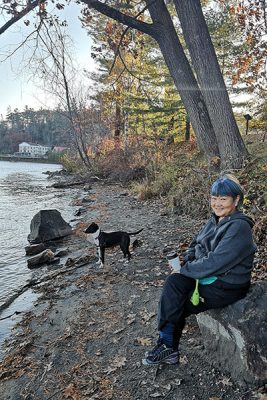 Our lives are made of these moments of presence when we can truly appreciate who we are and what we have within and around us.
Our lives are made of these moments of presence when we can truly appreciate who we are and what we have within and around us.
It’s between moments of busyness and doing, with our long to-do lists, when we pause for a walk, look outside, sit down to enjoy a cup of coffee or tea, pat a dog or cat, or look at children playing, where we find presence. And in becoming present, we find our home again, which is calm, quiet, and waiting for us.
I was raised in a family where my parents were either busy or not. There was no in-between button. It was either off or on. I couldn’t understand when I would see people doing nothing. They sat without reading, looking at their phones, or other distractions. I now understand they were doing more than I did with my endless to-do list. They were not rushing to the next thing or moment but were in the present moment. This sounds easy but is hard to do if you’re a high-achiever and doer like me. I’ve had to train myself and make space in my life for this.
Psychologist and internationally renowned expert on Buddhist meditation Tara Brach says we run from task to task instead of enjoying our lives along the way. Our nervous systems can feel this stress, and the primary reaction when we’re under pressure is to try and control and manage things that are not often controllable, which creates more anxiety.
American philosopher, historian, and psychologist William James (1842 –1910) talked about the “ceaseless frenzy” in which we always feel that we “should be doing something else.” He said this ceaseless frenzy, the race through life, is symptomatic of the numbing of spirituality.
Winter provides an excellent opportunity to practice making time for the pauses, the gaps, and the in-between of the doings. And in this space, we transform from human doers to human beings again. We develop our sense of hygge. What’s in your winter manifesto?
***







 16 Nov 2022
16 Nov 2022
 Posted by Caroline Ishii
Posted by Caroline Ishii 